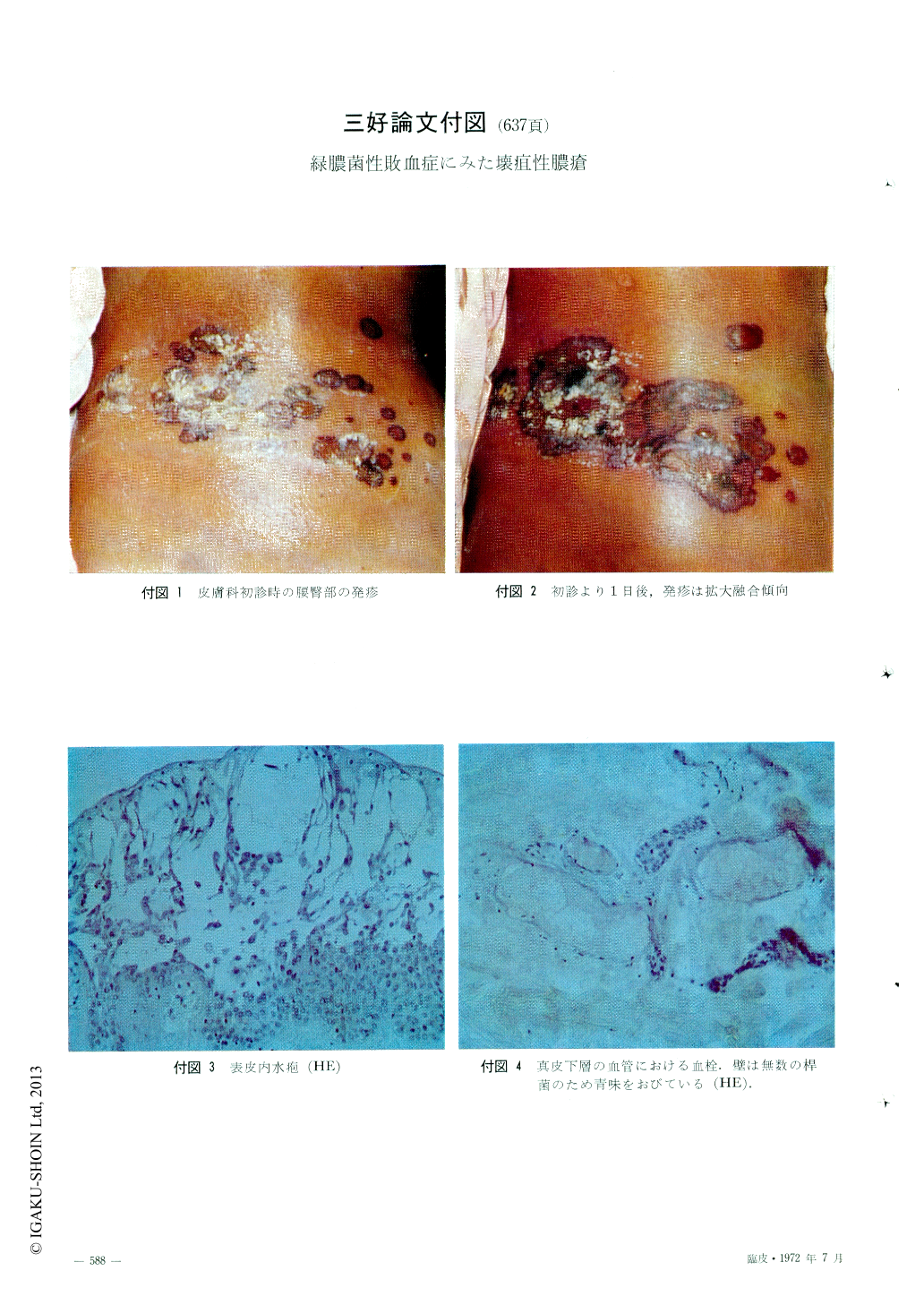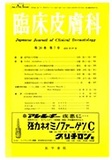Japanese
English
- 有料閲覧
- Abstract 文献概要
- 1ページ目 Look Inside
化学療法の発達と普及は近年めざましいものがあり,多くの恩恵をもたらした反面,菌交代現象としてグラム陰性桿菌感染症を増加させた.とりわけ緑膿菌性敗血症(PS)は難治性で,エンドトキシンショック(ES)におちいり易く致命率が高い.
Ecthyma gangrenosum (Eg)はすでに,19世紀末に緑膿菌との関係が注目され以降欧米では,その特異な臨床像はPSの診断に役立つとされ関心がもたれているにもかかわらず,本邦皮膚科領域においては,その点に触れた論文は意外に少ない.
A 28-year-old housewife developed the bulla on the annular, coin-sized purpura on the lumbar region during hospitalization in the internal medicine for Pseudomonas aeruginosa sepsis. Infiltration was pal-pable around the purpura and there were painful diffuse erythemas on the back and buttock. The bulla was broken rapidly, and left punched-out ulcer. She died from the shock 4 days after the development of the euption.
Histologic specimen of the skin lesion showed the intra-epidermal acantholytic bulla at the first glance. The vessels throughout the dermis showed sludging and thrombosis of fibrin (PTHA positive). There were numerous gram-negative rods in the wall of the vessels and in the connective tissue around them. These findings were the typical picture of so-called "Pseudomonas vasculitis or perivascular cuffing." The dermis was edematous in general, and had partial bleeding, but there was no reaction of cell infiltration. Pseudomonas aeruginosa was cultured from the blister fluid. Decrease of leukocytes, platelets and prothrombin were proved during the exanthematous stage.
These findings suggested the Shwartzman's phenomen or the disseminated intravascular coagulation as a pathomechanism of the eruption.

Copyright © 1972, Igaku-Shoin Ltd. All rights reserved.


